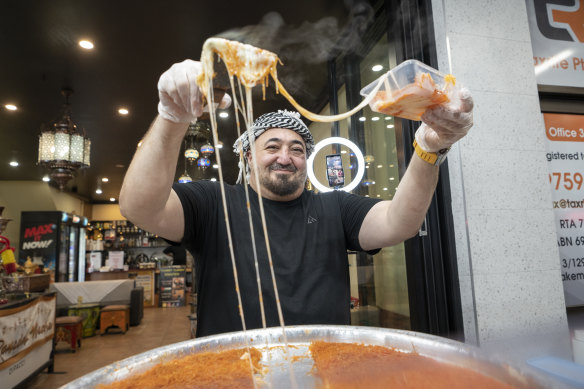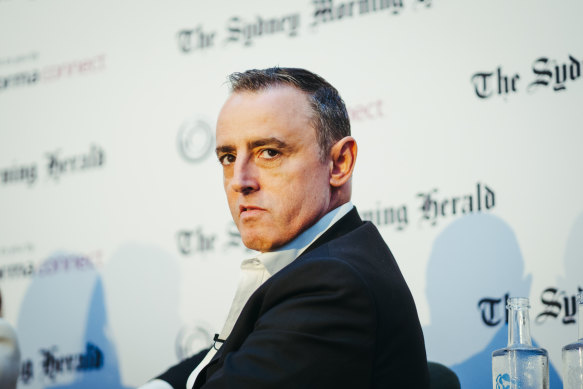Visitors don’t give Sydney the credit it deserves on food, which must become a much bigger part of the city’s marketing strategy, the head of tourism agency Destination NSW says.
Steven Cox said the light festival Vivid Sydney, which starts next week and has a significant food element for the first time, would be the first of many attempts to put food and dining at the centre of Sydney’s brand.

Food’s potential as a tourism drawcard has been underlined by the massive crowds now flocking to the Ramadan Nights festival in Lakemba.Credit: Flavio Brancaleone
“The reason why Vivid Food is happening this year as part of the Vivid program is because we know that Sydney under-weights in [people’s] perceptions of food and drink and produce,” Cox told The Sydney Morning Herald’s Sydney 2050 Summit on Monday.
“We’ve got the best food and drink and produce of anywhere in Australia, but in the minds of visitors that’s not always there.”
Cox said he recently had illuminating conversations with two leaders in their respective fields that reinforced this imperative, including Sydney-based chef and restaurateur Neil Perry.
“I said, ‘Neil, you’ve got restaurants in Sydney and Melbourne, where is the best food in Australia?’ He said without a shadow of a doubt it is Sydney,” Cox said.
“The Japanese love to travel for food. I spoke to the Japanese ambassador the other day [and asked] ‘what do the Japanese think of Sydney’s food?’ They said they still think it’s a prawn on the barbie from Hoges in the 1980s or whatever.”
Starting in 1984, the Australian Tourism Commission ran a highly successful advertising campaign, aimed at the US market, featuring actor Paul Hogan imploring Americans to come and say “G’day”. In one advertisement he promised to “slip an extra shrimp on the barbie for you”, which became an iconic phrase.
“Sydney has not traditionally had a brand position that has gone after [food and drink] over the longer term. We have historically relied too much on the bridge and the harbour,” Cox said.
“Our future campaigns will lift [food and drink] up as part of the brand promise around what a visit to NSW is all about.”

Steven Cox, head of tourism agency Destination NSW, wants to give Sydney’s food scene a chance to shine.Credit: Dion Georgopoulos
Food’s potential as a tourism drawcard has been underlined by the massive crowds now flocking to the Ramadan Nights festival in Lakemba. The government’s 24-Hour Economy Commissioner Mike Rodrigues told the summit another 1.2 million people visited the food-oriented event this year. It ran until 3am most nights for four weeks in March and April.
There was a post-COVID boom in restaurant openings in Sydney last year, though our tourism campaigns have not traditionally prioritised restaurants as a drawcard; at least not to the extent they feature in Victoria’s “Visit Melbourne” campaign.
Destination NSW has a 2030 target for NSW to be the premier visitor economy in the Asia-Pacific, with visitors spending $65 billion a year. It is currently $41 billion, just shy of the pre-COVID level of $43 billion, Cox said.
Sydney has been constrained by capacity limits at Sydney Airport, Cox said, and the forthcoming Western Sydney Airport – with no curfew – would be transformative. But he said government and industry needed to ensure surrounding infrastructure, hotels, transport, food, beverages and experiences were up to scratch for opening day.
“There’s no doubt whatsoever that flights will come in,” he said. “The question for me is … are we going to fully leverage the potential of that airport as quickly as we could? That’s down to execution from now on.
“Everyone needs to work really, really hard to leverage the airport … it’s a very, very big investment. It felt like a long way away. People are starting to realise it’s not far away.”
The Morning Edition newsletter is our guide to the day’s most important and interesting stories, analysis and insights. Sign up here.